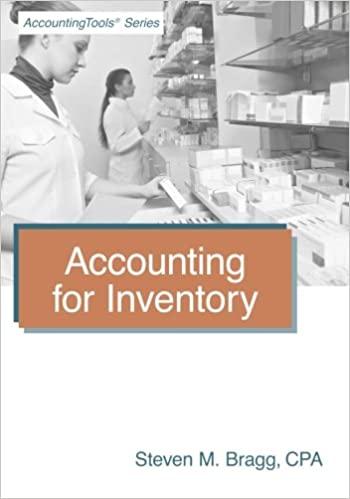Answered step by step
Verified Expert Solution
Question
1 Approved Answer
Internal Control Evaluation and Improvement in Accounting Internal control evaluation and improvement are critical processes within accounting and auditing aimed at ensuring the effectiveness, efficiency,
Internal Control Evaluation and Improvement in Accounting
Internal control evaluation and improvement are critical processes within accounting and auditing aimed at ensuring the effectiveness, efficiency, and reliability of an organization's internal control systems. Internal controls are policies, procedures, and mechanisms implemented by management to safeguard assets, ensure the accuracy of financial reporting, and promote compliance with laws and regulations. Here's a detailed overview of internal control evaluation and improvement:
Evaluation Process:
Risk Assessment: The evaluation process begins with identifying and assessing risks that could impact the achievement of organizational objectives. This involves analyzing both internal and external factors that may pose threats to the organization's assets, operations, and financial reporting.
Control Activities: After identifying risks, management designs and implements control activities to mitigate these risks. Control activities may include segregation of duties, authorization and approval procedures, physical controls, and information technology controls.
Monitoring: Continuous monitoring of internal controls is essential to ensure that they are operating effectively. This involves ongoing reviews, assessments, and testing of control activities to identify deficiencies or weaknesses that require remediation.
Communication and Reporting: Management communicates the results of internal control evaluations to relevant stakeholders, including the board of directors, audit committee, and external auditors. Any significant deficiencies or material weaknesses identified during the evaluation process are reported, along with recommendations for improvement.
Improvement Initiatives:
Remediation of Deficiencies: When deficiencies or weaknesses are identified, management takes corrective action to address these issues promptly. This may involve implementing new controls, modifying existing procedures, providing additional training to employees, or enhancing oversight mechanisms.
Process Optimization: In addition to addressing specific deficiencies, management seeks opportunities to optimize internal control processes to improve efficiency and effectiveness. This may involve streamlining procedures, leveraging technology solutions, and reallocating resources to areas of higher risk.
Continuous Monitoring and Feedback: Improvement initiatives are not onetime efforts but rather ongoing processes. Management continuously monitors the effectiveness of internal controls and solicits feedback from employees, auditors, and other stakeholders to identify areas for further enhancement.
Fill in the Blank Question:
During the evaluation process, management identifies and assesses risks to determine potential to the organization's objectives.
A benefits
B threats
C opportunities
D weaknesses

Step by Step Solution
There are 3 Steps involved in it
Step: 1

Get Instant Access to Expert-Tailored Solutions
See step-by-step solutions with expert insights and AI powered tools for academic success
Step: 2

Step: 3

Ace Your Homework with AI
Get the answers you need in no time with our AI-driven, step-by-step assistance
Get Started


